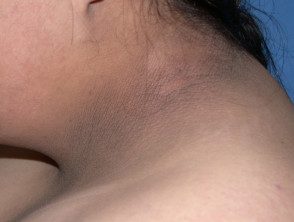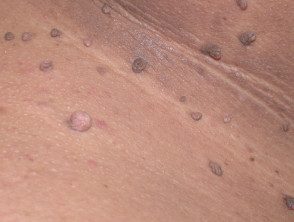What is it insulin?
Insulin is a polypeptide hormone that is produced by β cells of the pancreas and controls the blood glucose (sugar) concentrations. High concentrations of glucose in the blood stimulate the secretion of insulin, which transfers glucose from the bloodstream to muscle, fat, and liver cells. This promotes glucose storage for future energy needs, and in healthy individuals, this feedback mechanism keeps the body in euglycemia (mean glucose concentrations).
What is insulin resistance?
Insulin resistance is defined as a subnormal glucose response to a given concentration of insulin.
- When there is resistance to endogenous (internally produced) insulin, blood glucose concentrations may be normal or high, while serum Insulin concentrations are also high.
- Insulin-dependent diabetic patients may have resistance to exogenous (externally received) insulin. They require higher doses of insulin than usual to control high blood glucose (hyperglycemia)
The natural progression of insulin resistance involves first hyperinsulinemia (high insulin levels) after meals and then fasting hyperinsulinemia. The failure of compensatory mechanisms to maintain euglycemia leads to hyperglycemia, glucose intolerance, and diabetes mellitus.
Skin signs of insulin resistance.

Acanthosis nigricans

Skin tags

Acne, hirsutism + acanthosis nigricans
Who has insulin resistance?
Insulin resistance is found in both men and women of all races and ethnicities. It is especially predominant where people lead a sedentary lifestyle and consume a western diet.
Causes of insulin resistance.
Insulin resistance is influenced by a combination of genetic, epigenetics and environmental factors.
Inherited conditions
Insulin resistance can rarely be the result of an inherited metabolic disease. These include:
- Insulin receiver mutations (like leprechaunism)
- Write a syndrome insulin resistance (insulin receptor mutations, signaling defects)
- Type B insulin resistance syndrome (antibodies against insulin receptors)
- Decreased adiponectin and leptin associated with lipodystrophies.
Secondary insulin resistance
Most patients have secondary insulin resistance, which can be multifactorial.
- Obesity (70–80% of patients).
- Excess endogenous or exogenous hormones (systemic glucocorticoids, catecholamines, growth hormone, placental lactogen)
- Stress
- Infection
- The pregnancy
- Starvation
- Nephropathy
- Liver cirrhosis
- Ketoacidosis.
What are the clinical features of insulin resistance?
Insulin resistance is associated with a wide variety of clinical presentations. Factors to consider include:
- Obesity, particularly abdominal obesity: Obesity can lead to insulin resistance through increased production of free fatty acids and adipocyte cytokines, which modulate insulin sensitivity and are pro-inflammatory.
- Abnormal glucose metabolism: This spectrum can range from hyperinsulinemia with medium glucose concentrations, to insulin-dependent type 2 diabetes mellitus that requires large doses of insulin to control Blood glucose
-
Metabolic syndrome: metabolic syndrome is the combination of obesity, hypertension, dyslipidemia and hyperglycemia.
-
Hyperandrogenism and reproductive abnormalities: Women with severe tissue resistance to insulin may have virilizationhirsutism amenorrhea or infertility often associated with polycystic ovary syndrome.
- Musculoskeletal changes: some patients report muscle cramps unrelated to exercise.
- Autoimmunity: when insulin resistance is a consequence of autoantibodies, patients may also have other autoimmune disorders, such as systemic or systemic lupus erythematosus sclerosis.
Insulin resistance is believed to induce changes in the skin through hyperinsulinemia, which activates insulin. growth factor-1 (IGF-1) receptors in fibroblasts and keratinocytes and stimulates your proliferation. Hyperinsulinemia can also influence sex steroid production and increase free testosterone.
What are the dermatological symptoms of insulin resistance?
Cutaneous manifestations of insulin resistance can help diagnose the condition and its complications. Skin manifestations can include:
- Acanthosis nigricans
- Skin tags (skin tags)
- Acne
- Hirsutism
-
Androgenetics alopecia (male pattern hair lost).
Skin diseases that have been commonly associated with insulin resistance and metabolic syndrome include:
- Psoriasis
- Hidradenitis suppurativa
-
Vitiligo
What are the complications of insulin resistance?
Long-term consequences of insulin resistance include the effects of diabetes (eg, peripheral vascular disease, kidney disease, and visual complications) and certain malignant tumors associated with obesity and insulin resistance (eg, colon, breast, and endometrial cancer).
Hyperinsulinemia, hyperglycemia, and adipocyte cytokine release associated with insulin resistance lead to vascularization. endothelial dysfunction, dyslipidemia, hypertension and vascular inflammation. These effects promote the development of atherosclerotic cardiovascular disease.
How is insulin resistance diagnosed?
There is currently no validated test to measure insulin resistance in clinical practice, and the diagnosis is usually made clinically.
While the euglycemic insulin fixation technique is the gold standard technique for diagnosing insulin resistance in the research setting, it is complicated, invader and expensive, and rarely used in clinical practice.
Blood tests in patients with insulin resistance can reveal:
- Elevated serum triglycerides (> 1.47 mmol / L)
- Elevated serum triglycerides, high-density lipoprotein (HDL) ratio (> 3.0)
- High fasting insulin concentration (> 109 pmol / L).
The presence of obesity, hypertension, increased fasting glucose and triglyceride levels, and low HDL (high-density lipoprotein) is used to diagnose metabolic syndrome.
The diagnosis of polycystic ovary syndrome can be supported by the detection of multiple ovarian cysts in the pelvis ultrasound exam.
What is the treatment for insulin resistance?
There are no published guidelines on the management of insulin resistance per se.
Treatment that has been shown to decrease insulin resistance includes:
- Weight reduction
- Increased physical activity.
- A Mediterranean diet, with an emphasis on fruits, vegetables, nuts, and whole grains.

